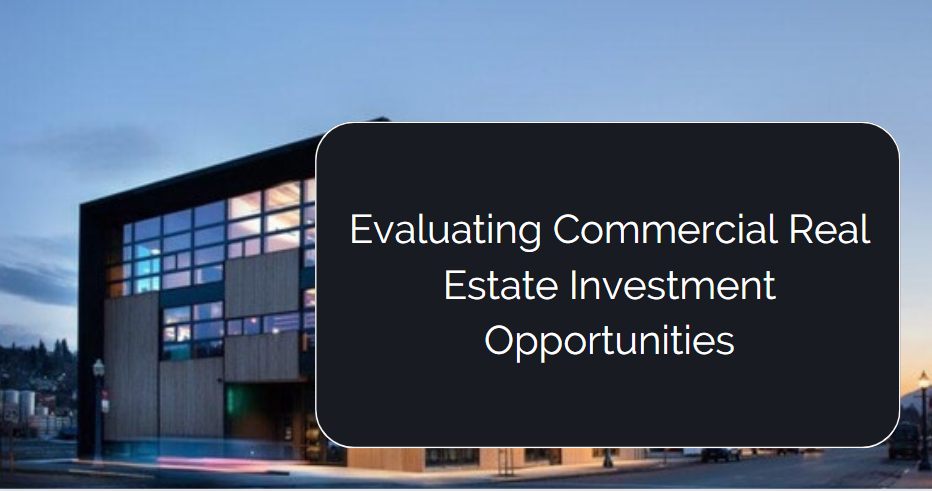Investing in real estate is a practical route to establish consistent tax-advantaged passive income and equity growth, leading to enduring wealth.
Despite the potential profits of owning rental real estate, getting started can be daunting for many. Here are four fundamental considerations to kickstart your journey in real estate investment.
Understand Your Investment Goals
Most real estate investors share a common objective: to make money. We seek to establish stable tax-advantaged income streams and equity growth, hoping to enjoy additional perks such as diversification, multiple income sources, inflation hedging, and more.
With clear goals, the next step is to trace back the route. How do you navigate from your current position to your financial goals? This journey requires introspection and self-assessment. It's crucial to decide whether you wish to invest actively or passively.
Active Real Estate Investing vs Passive Real Estate Investing
Active investors are hands-on and might engage in asset or property management or both. They're deeply involved in the venture, bringing in-depth real estate knowledge that contributes to success. They devise and implement business plans for rent growth and appreciation. Their involvement stretches from buy-sell decisions to net operating income targets and beyond. Some may even dive into day-to-day operations.
Before deciding to be an active investor, you must contemplate a few things. Do you have sufficient time to dedicate to your project? Many optimistically believe they do, but reality checks often remind them of their existing commitments such as full-time jobs and family responsibilities.
For those with time, the next step is an honest evaluation of your expertise. Are you well-versed with the industry, either through family legacy or daily work? Have you been mentored in the steps to win in real estate investment? If not, a steep learning curve awaits you, or perhaps passive, fractional investing suits you better.
Passive investors seek the advantages of real estate investing without management hassles. These investors delegate management to professionals they trust. However, it demands upfront due diligence to ensure collaboration with reputable professionals with a consistent success record.
Commercial or Residential Real Estate
After determining your investment style—active or passive—you need to decide your property type. The broad categories include residential or commercial real estate.
Commercial real estate includes retail, office, industrial, hospitality, storage, and multifamily properties (five units and larger). In contrast, residential real estate, four units or fewer, comprises single-family homes, duplexes, triplexes, and quads.
Many view residential properties as an entry point into real estate investment. While some have successfully profited from it, the absence of economies of scale and professional property management can limit your success.
Why Commercial Multifamily?
Our focus on commercial multifamily real estate arises from several factors. These properties offer the economies of scale necessary for greater success, and as an investment in a fundamental necessity—shelter—demand never ceases. Most importantly, we opt for commercial multifamily real estate due to its safety profile.
Although all investments carry risk, they don't have the same level of risk. Over any long-term period, commercial multifamily real estate has the best risk-adjusted return. We invest conservatively, aiming for the best possible return with the least risk. Commercial multifamily real estate has the highest Sharpe ratio (risk-adjusted return) among all real estate classes, making it an outright winner.
Our approach might not be the best fit for everyone. You need to align your goals, strategy, and risk tolerance. Make a researched, disciplined decision and resist the lure of trend-chasing or blind faith in market predictions.
Research is Key
Some assume that real estate investment begins with property purchase. However, buying a property without thorough research is a shortcut to disaster. If you aim to build wealth through real estate, rigorous research is mandatory. Your earning potential depends on factors like the health of the housing market, the job market, and emerging industries, among others. Remember, the market matters—a lot!
Ensure your market, business plan, and capabilities align perfectly. Any misalignment can dampen your results.
Know your investment location—are you investing in a college town, a major metro's urban core, or the suburbs? Understand your potential renters' demographics and your market's status in the real estate cycle. Stay updated with landlord-tenant laws and any changes therein.
While this research might seem tiresome, it's crucial for your investment's health. It's akin to consuming nutritious food and maintaining regular exercise for your personal health. Without it, your investments may suffer. If you're a passive investor, professionals can conduct this research, but be sure to question their market choices and track records.
Aim for Rental Income
Real estate investments can provide multiple income sources. You can earn passive income (yield), appreciate your property, and pay down the mortgage—a blended return. We prioritize cash flow as we know it leads to equity growth. Properties with positive cash flow are also well-positioned to withstand market downturns.
Sadly, some real estate strategies are speculative. We often see people buying low cap rate properties, mainly in coastal markets, without passive income provision. They bank on appreciation, which can pay off but involves more risk. A market downturn can be catastrophic for speculative investors without cash flow. Hence, we recommend that your real estate strategy should involve properties that provide passive income from day one.
Your Journey in Real Estate Investment
Real estate investing is a proven path to create additional income and build lasting wealth. If you haven't started yet in real estate investment, this guide could be a good starting point. First understand your own preferences and determine whether active or passive investing is a better fit for your lifestyle, personality and financial goals. Next, you need to decide between commercial and residential real estate, and then you need to do thorough research.








